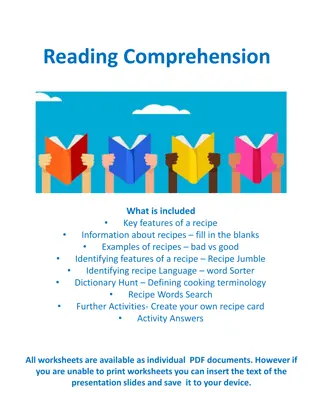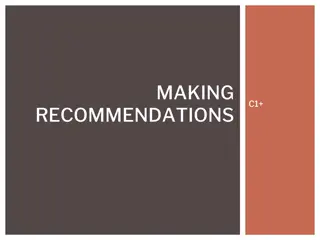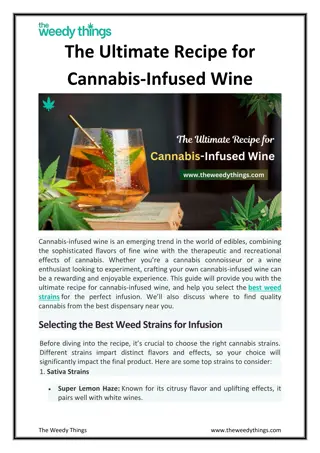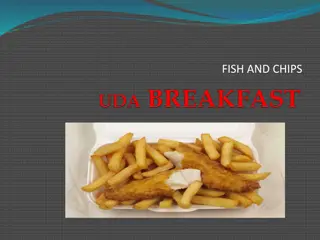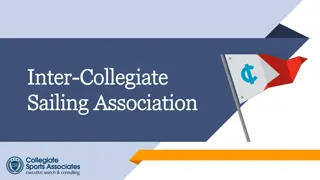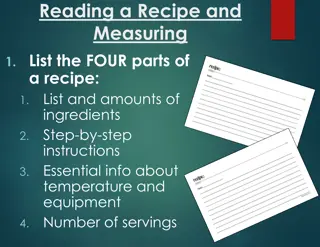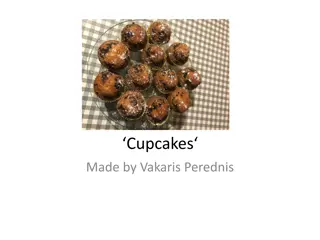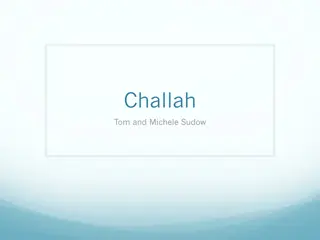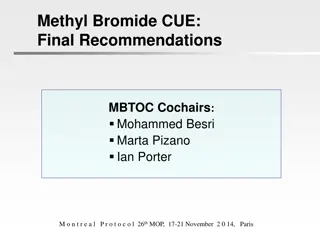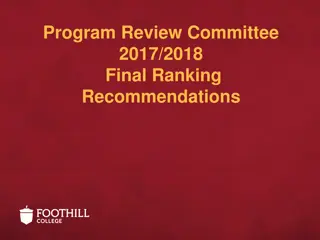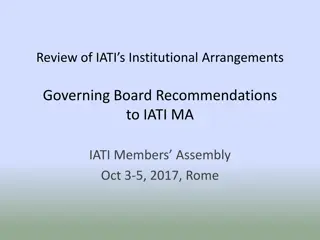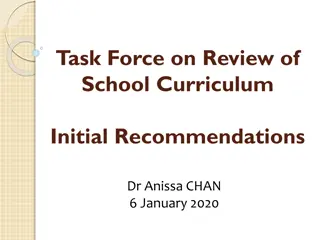Enhancing Recipe Recommendations with C-KGAT Model
Introducing the Contrastive Knowledge Graph Attention Network (C-KGAT) for personalized recipe recommendation, addressing user preferences and noise in interactions. The model leverages a collaborative knowledge graph, user-recipe interactions, and textual features to recommend top-K recipes to users. C-KGAT comprises components like knowledge graph embedding, KGAT-Rec recommender, and a contrastive learning module for robustness. By merging user behaviors and recipe knowledge, C-KGAT improves recommendation accuracy and user satisfaction.
Download Presentation

Please find below an Image/Link to download the presentation.
The content on the website is provided AS IS for your information and personal use only. It may not be sold, licensed, or shared on other websites without obtaining consent from the author.If you encounter any issues during the download, it is possible that the publisher has removed the file from their server.
You are allowed to download the files provided on this website for personal or commercial use, subject to the condition that they are used lawfully. All files are the property of their respective owners.
The content on the website is provided AS IS for your information and personal use only. It may not be sold, licensed, or shared on other websites without obtaining consent from the author.
E N D
Presentation Transcript
Contrastive knowledge graph attention network for request- based recipe recommendation Authors : Xiyao Ma, Zheng Gao, Qian Hu, Mohamed AbdelHady Presented at IEEE ICASSP 2022 1
Introduction Kitchen assistant is one of the enabled services in intelligent voice assistants. Current solutions for recipe recommendation have two limitations: Neglect user personalized preferences User recipe interaction noise We propose a Contrastive Knowledge Graph ATtention network (C- KGAT), which includes: A knowledge graph attention-based recommender. Profiling user diversified preferences from user historical behavior sequences. A contrastive learning module with two auxiliary tasks to improve model robustness. Alexa Confidential 2
Problem Formulation Given a target user and his/her utterance request, we aim to recommend top-K relevant recipes. The information used in the proposed model includes: Users U Recipes I with textual and categorial features (i.e. recipe name, cooking time.) User recipe interactions with a sequence of behaviors (i.e. browse, add_to_cart) A recipe knowledge graph with recipe entities I and attribute entities E (i.e. cuisine, ingredients, keywords). Different types of relations connect recipes and corresponding types of attribute entities. In the end, we merge all information (user-recipe interactions and recipe knowledge graph) together to achieve a Collaborative Knowledge Graph (CKG). Alexa Confidential 3
Method: C-KGAT C-KGAT mainly consists of three components: Knowledge graph embedding leverage the structure of CKG to learn entity embedding. A KGAT-based recommender (KGAT-Rec) is proposed to learn collaborative user and recipe embeddings by modeling the diversified user preferences. A contrastive learning module contrasts user and recipe embeddings from different graph views to improve model robustness. Alexa Confidential 4
Method: Knowledge Graph Embedding Each user, recipe, and attribute entity is associated with an ID embedding, annotated by ??, ??, and ??, respectively, which are used to initialize their entity embeddings in the collaborative knowledge graph. TransE is used to learn the entity embeddings with loss: Alexa Confidential 5
Method: KGAT-Rec Alexa Confidential Alexa Confidential 6
Method: KGAT-Rec In the collaborative knowledge graph, a user/item collaborative embedding is updated by aggregating the rich semantic information from its neighbor triplets. Alexa Confidential 7
Method: KGAT-Rec We learn different user preferences from their sequential behaviors towards each interacted recipe by a one layer bidirectional Gated Recurrent Unit (GRU) Alexa Confidential 8
Method: KGAT-Rec Alexa Confidential 9
Method: KGAT-Rec We update the target entity embedding by aggregating its entity embedding and embeddings of its neighbors with LeakyReLU. We stack and concatenate L layers to represent user and recipe vectors. BERT is used to retrieve user request vector ???. Final recipe vector is the concatenation of its entity embedding ? ?and feature embedding ??learned from textual and categorical features. Final loss is BPR loss: Alexa Confidential 10
Method: Incorporating Contrastive Learning Graph Augmentation (GA) In the graph augmentation (GA) stage, different views of the input graph are generated to expose novel patterns of representations to improve the model generalization. Operations including: Node Embedding Dropout Edge Dropout we apply the operations on the input CKG graph G independently twice to generate two different graph views. Alexa Confidential 11
Method: Incorporating Contrastive Learning Unsupervised Contrastive Learning (UCL) InfoNCE loss is adopted to pull the different views of the same user entity close and push those of different user entities away: Alexa Confidential 12
Method: Incorporating Contrastive Learning Supervised Contrastive Learning (SCL) Given an observed user-recipe interaction, we encourage the agreement between the user and recipe generated from different views. Meanwhile, we minimize the agreement between unobserved user-recipe pairs. Alexa Confidential 13
Method: Incorporating Contrastive Learning The total CL loss is the summation of symmetrical unsupervised contrastive learning on user nodes and recipe nodes and supervised contrastive learning. The model is trained by alternatively minimizing the final recommendation loss ????= ????+ ????and KGE loss ???? during each epoch. Alexa Confidential 14
Experiments Datasets & Baselines Model Performance Comparison Ablation Study Model Robustness Alexa Confidential 15
Experiments: Datasets & Baselines Datasets: We use Alexa data where customers can interact with devices equipped with screens by vocal request in Recipe-Voice dataset and touching the screen in Recipe-Touch dataset. To ensure the data quality, we take the 3(10)-core subset for the two datasets, where each user or recipe has at least 3 (10) interactions, respectively. Baselines: Non-graph based CF and Graph based CF YoutubeDNN LightGCN KGCN KGAT Alexa Confidential 16
Experiments: Model Performance Comparison The table shows the relative performance improvement afforded by our method compared to all baseline models. Alexa Confidential 17
Experiments: Ablation Study We conduct ablation study to quantify the impact of the components in our proposed model and report the corresponding degradations, including the GRU for preference vector, contrastive learning (CL) that includes both UCL and SCL, supervised contrastive learning (SCL), node embedding dropout (NED), and edge dropout (ED). Alexa Confidential 18
Experiments: Model Robustness To validate model robustness by adding contrastive learning module, we train models with different ratios of additional noise data sampled from unobserved interactions and compare their performances. Alexa Confidential 19
Conclusion To summarize, we propose a contrastive knowledge graph attention network for user request-based recipe recommendation. The proposed model not only boosts performance by modeling user preferences towards different recipes but also integrates unsupervised and supervised contrastive learning to improve model robustness. In the future, we plan to improve the model performance with advanced negative sampling strategies and transfer learning for cross- domain recommendation. Alexa Confidential 20
Thanks! Q & A Alexa Confidential 21
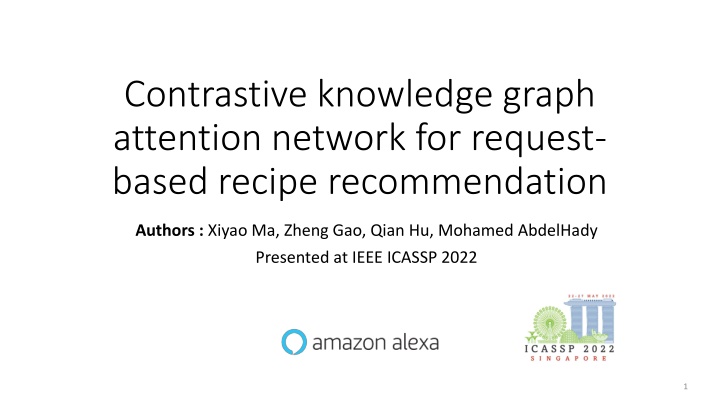


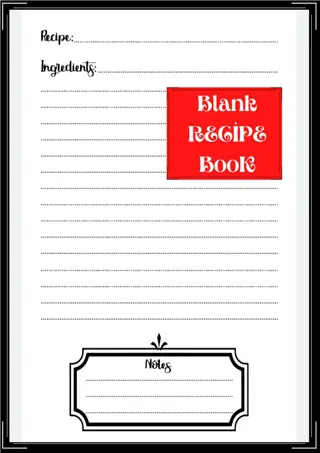
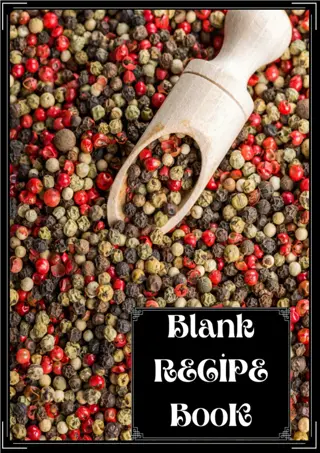
![[✔PDF✔⚡] ✔DOWNLOAD✔ Blank Recipe Book For Holiday Season: My Holiday Recipe](/thumb/68037/pdf-download-blank-recipe-book-for-holiday-season-my-holiday-recipe.jpg)
![GET [✔PDF✔] DOWNLOAD✔ My Vegan Recipe Notebook for all your recipes - 6x9 i](/thumb/68090/get-pdf-download-my-vegan-recipe-notebook-for-all-your-recipes-6x9-i.jpg)
